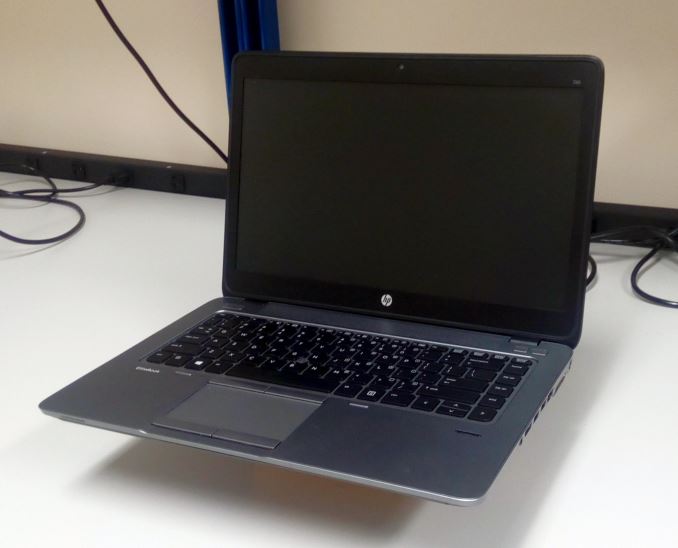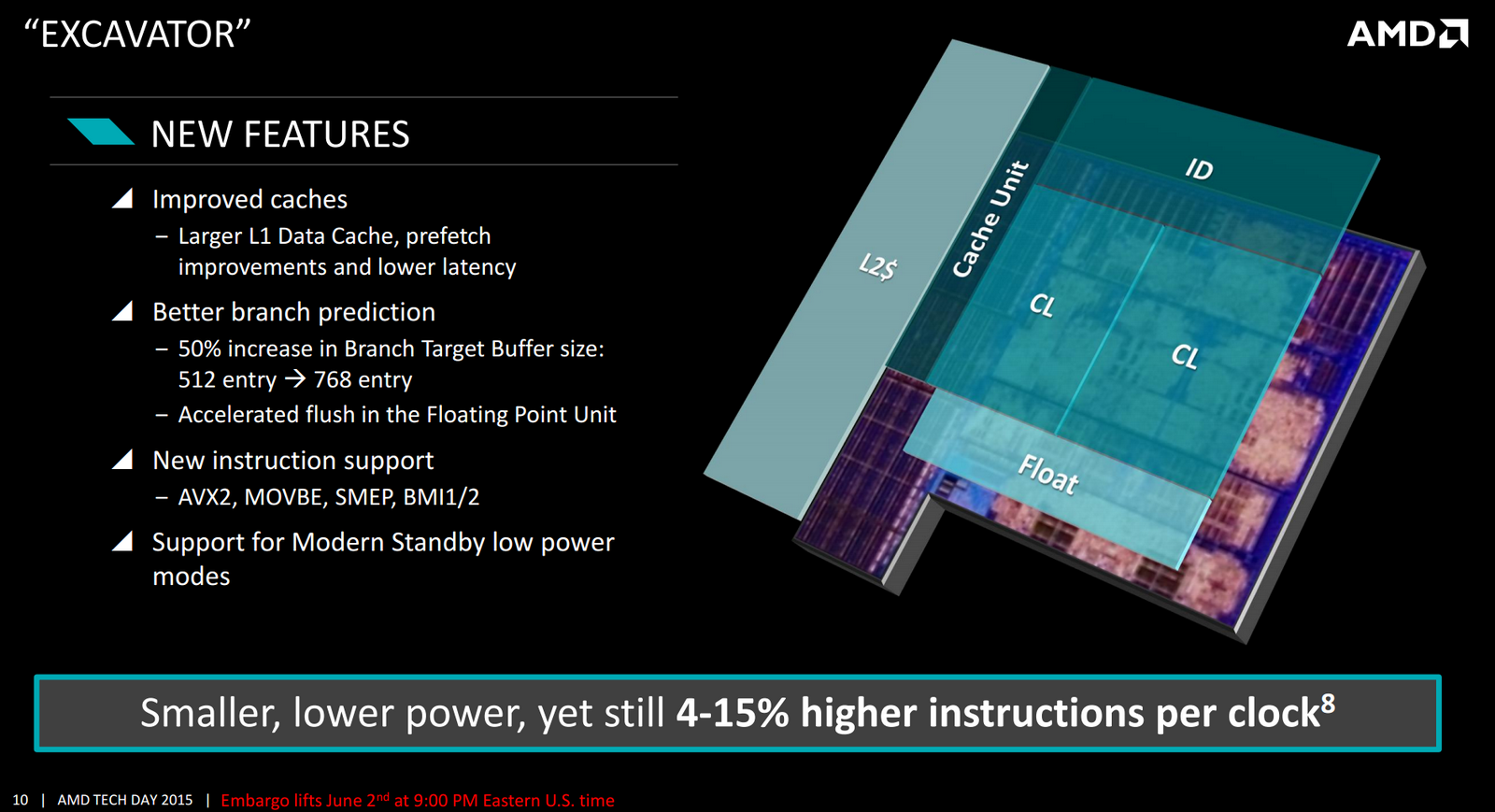Who Controls the User Experience? AMD’s Carrizo Thoroughly Tested
by Ian Cutress on February 4, 2016 8:00 AM ESTNo Room at the Win
The interesting thing about laptop design is that for the most part we are dealing with a number of devices with the same level of power consumption. This means that given sufficient standards, the same laptop shell - be it plastic, aluminium or something a bit more exotic - should be able to house different components that operate at a similar TDP, all with similar battery capacities. Thus if a company gets a ‘win’ with a laptop design, then an equivalent TDP processor from the competition (again, there are other factors involved such as controllers and z-height) should be able to work well in that same device.
But one key differentiator between Intel and AMD however is the consistent level of halo devices available with each manufacturer's hardware. It doesn't take long to find the evolutions of Intel's Ultrabook line that focus on high performance, and other premium devices designed to hit a certain combination of thickness and battery life, such as ASUS' Zenbook line or the Apple Macbook Air. In the tablet space, Intel has had design wins with the Microsoft Surface line as well as others, especially premium devices. These are all high volume, highly advertised product lines available in almost every market and not hard to find. In the case of the three mentioned above, some are household names and all of them are well known in the technical media zeitgeist.

HP Elitebook, one of the more premium designs with AMD inside
However, if AMD is mentioned in a similar vein, it is difficult to draw a single conclusion or the name of a premium or otherwise well-known laptop model from memory unless you happen to either work directly with AMD marketing or you are the product manager at a parner OEM. There have been no design wins or public contracts with AMDs mobile processors, and no big halo products that champion both performance and industrial design in a single device. As a result there has to be an element of questioning here. Are OEMs unwilling to use AMD? Do AMD products have a bad reputation? Is there something inherent with the name or product that makes OEMs reluctant, or users to withhold their purchases? Or is there something fundamentally wrong with the processor? As is often the case, the predicted answer to this question is a mixed bag.
Carrizo over Kaveri
As mentioned previously, Carrizo is the name for the family of APUs that use AMDs fourth iteration of the Bulldozer architecture, Excavator. Carrizo is built on GlobalFoundries' 28nm process node and comes inline with AMDs recent renegotiation of contracts regarding the scale and scope of the APU product line. Carrizo APUs will be available in 15W variants, which reflects the focus of the architecture update as well as the change in metal stack arrangement incorporated for this family to optimize transistor density. Meanwhile the higher-end models will have an available TDP-Up mode of 35W in order to increase performance, although this is at the discretion of the OEM. AMD for their part has already stated that their primary use case for Carrizo is at 15W, as 35W is the point where the Carrizo's power optimizations aren't quite as efficient and the performance of previous generation APUs will intersect with Carrizo (when talking raw CPU, rather than other benefits Carrizo has).
In launching Carrizo, AMD was clear on the target market for this APU - laptops in the $400-$700 range. It has been pointed out by media and analysts that this market segment represents an opportunity for AMD to fit between Intel's low power/high performance/high cost Core-M line of processors, the low power/low performance/low cost Atom line and the higher power/medium cost Core i3. According to AMD, this segment represents 40% of all laptop sales, covering users who want more than a budget device but something below the high costs of a premium device.
Meanwhile AMDs secondary aim with Carrizo is to offer premium level performance in certain applications at a lower price point by using Carrizo's stance as the first CPU architecture to be ratified against the heterogeneous system architecture (HSA) standards. As a result, AMD had been working with software developers in order to leverage HSA benefits in specific code bases and subsequently improve in performance, particularly with software of widespread importance, such as Adobe and LibreOffice.
Carrizo is a true system-on-chip (SoC), integrating the CPU, the GPU, and the input/output hub all on one piece of silicon (and thus one package). This leads to several direct benefits - reducing the power consumption of the I/O hub by bringing it down to the same process node as the main processor, allowing different areas of the SoC to be power gated under a single control system rather than recreating power delivery networks around the system, and ease of use when it comes to HSA requiring less data to travel around external buses.
AMDs main competitor in the mobile processor space, disregarding tablets for the moment and devices like Surface RT/Chromebook Pixel, is Intel. Intel, like AMD, leverages an x86 CPU design with integrated graphics on the same die. Thanks to a combination of many years of experience with graphics and designs intentionally favoring high performance integrated GPUs, AMDs main positive point of performance in recent generations has been the integrated graphics arena, where they win out typically in terms of graphics performance/cost and graphics performance/power metrics. Thus a number of improvements to Carrizo over previous architectures relate to graphics use - either using it more with HSA or offloading certain workloads to dedicated IP to keep more of the SoC at an idle state.
Carrizo’s design allows AMD to add two more graphics compute units (+33%) at 15W compared to Kaveri at a similar frequency, which combined with IPC increases in the processor has led to some interesting claims for performance. These claims have been picked up by casual readers and OEMs alike.











175 Comments
View All Comments
Squinoogle - Saturday, February 27, 2016 - link
An interesting read. I'll say I'm glad you went to the bother even if the ends weren't quite what you were expecting from the outset.I agree that it would be quite interesting to see someone make a proper halo device to showcase Carrizo at its best, rather than the trend of taking an established Intel chassis and then stuffing a hobbled AMD configuration inside it.
Speaking of which, I had a look at the HP UK website since I remembered seeing exactly that situation in the past (was an Envy 15 model that time) and came across an interesting trio of devices:
Three models from the Pavilion Black Edition range, all three using the same chassis and internal components, the only difference being the wifi card on the A10 model is upgraded.
http://store.hp.com/UKStore/Merch/Product.aspx?id=... - Core i3-6100U £459
http://store.hp.com/UKStore/Merch/Product.aspx?id=... - A10-8780P + R7 M360 £529
http://store.hp.com/UKStore/Merch/Product.aspx?id=... - Core i5-6200U £549
I'd be interested in seeing a true apples-to-apples comparison between devices like these, where the Intel and AMD models are priced and specified so closely together.
Gc - Sunday, February 28, 2016 - link
Another Carrizo 'capability' not implemented:Carrizo was advertised as the first architecture to support full HSA 1.0, but ...
Can any retail Carrizo systems run HSA?
As I understand, to run HSA currently requires installing Linux and the HSA driver.
(Possible running the HSA Docker container on this host, but the host must have the HSA driver.)
https://github.com/HSAFoundation/HSA-Docs-AMD/wiki...
https://github.com/HSAFoundation/HSA-Drivers-Linux...
The only test system listed is a "A88X-PRO" desktop motherboard and Kaveri "A10-7850K" APU.
(No Carrizo chips are available for that socket.)
The host must have "the IOMMU enabled in the BIOS".
This is the IOMMU of the GPU, typically under Graphics Configuration in the BIOS.
https://community.amd.com/thread/169962
However, I have not seen any retail Carrizo systems that implement that BIOS option. Do they exist? (The closest thing is the option to enable AMD-V as required for Docker, but that is not the same thing, as the above link indicates.)
If not, why not? (Is an effort/investment needed to get the support into common AMD chip BIOS/UEFIs used by ODMs, similar like it was needed to get support into the Linux kernel?)
albert89 - Wednesday, March 23, 2016 - link
Although I congratulate Anandtech after repeated demands from consumers like myself as to why a review of Carrizo wasn't done sooner the result is a review that leaves one ask many questions and a demand for another review since new info has come to light.So redo the whole review under dual channel conditions for AMD's Carrizo. Otherwise you'll be leaving this review incomplete and short changing a competitor of Intel leaving us to wonder how bias Anandtech is towards AMD !
DJ Dave - Saturday, March 25, 2017 - link
hey.i just bought this as a refurb. it seems to lag/stutter with certain programs. Mine has 2 ram slots with 4gb in each..does anyone know if that can be upgraded?krissh6563 - Sunday, August 9, 2020 - link
Sir I have Hp Elite-book 745 G2 laptop. Now I am facing overheating problem in my laptop. So what should I do.